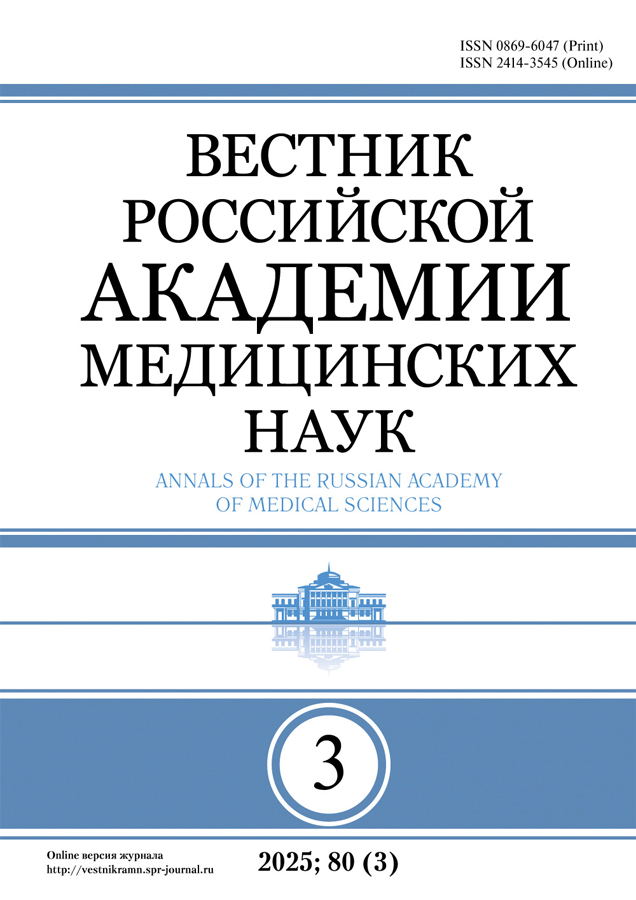RESUSCITATION OF VITAL ACTIVITY AFTER COLD ARREST OF RESPIRATION BY PHYSIOLOGICAL METHODS WITHOUT REWARMING THE BODY
- Authors: Ivanov K.P.1
-
Affiliations:
- I.P. Pavlov Institute of Physiology. St. Petersburg
- Issue: Vol 69, No 7-8 (2014)
- Pages: 5-9
- Section: PHYSIOLOGY: CURRENT ISSUES
- Published: 20.07.2014
- URL: https://vestnikramn.spr-journal.ru/jour/article/view/401
- DOI: https://doi.org/10.15690/vramn.v69.i7-8.1103
- ID: 401
Cite item
Abstract
The arrest of respiration during deep hypothermia means death, though at a low temperature the heart may rhythmically contract for 30–40 minutes more. The attempts of rewarming only shorten the time before the heart arrest. “The aim of the study” the attempts to develop the methods of stimulating the respiration and heart without rewarming the body. Calcium ions (Ca2+) are believed to accumulate in the nervous cells in cold. An excess of these ions inhibits the metabolism. Moreover it stimulates the cell proteases, which destroy the cell membranes. “Materials and methods” The work was carried out on wite rats 250-320 g in weight. We introduced disodium salt of ethylenediaminetetraacetic acid (EDTA) into the animals. The second method of blocking the mechanisms of the cold death was artificial respiration. “Results”EDTA reacts with calcium ions, decreases their quantity in the blood, and, consequently, in a complex manner in the cell protoplasm. Artificial respiration not only increases the flow of oxygen into an organism but also decreases the lowest temperature threshold of the cold death of an organism. “Conclusions” A decrease in the surviving threshold by 1.5-1.8oC is very important from the point of view of reanimation of an organism since to preserve life in the critical period of reanimation each 0.5oC are important. Prolongation of minimal frequency of heart contractions and maintaining a minimal arterial blood pressure in an overcooled organism given the body temperature of 11-12.5oC is a special problem of great interest associated with many physiological and biological parameters.
Keywords
About the authors
K. P. Ivanov
I.P. Pavlov Institute of Physiology. St. Petersburg
Author for correspondence.
Email: kpivanov@nc2490.spb.edu
PhD, professor, Head of the Laboratory of Bioenergetics and thermoregulation of I.P. Pavlov Institute of Physiology, Honored Scientist of the Russian Federation
Russian Federation
References
- Barton A., Edholm O. Man in a cold environment. B. Saunders
- Company. London. 1955. 333 p.
- Harnett R.M, Pruitt J.R., Sias F.R. A review of the literature
- concerning resuscitation from hypothermia. Aviat. Space Environ.
- Med. 1983; 54: 487–495.
- Hochachka P.W., SomeroG.N. Strategies of biochemical adaptation.
- W.B.Saunders Company. London. 1973.
- Hochachka P.W., Somero G.N. Biochemical adaptation. Mechanism
- and process in physiological evolution. Oxford University Press.
- 466 p.
- Ivanov K.P. Physiological blocking of the mechanisms of cold death.
- J. Therm. Biol. 2000; 25: 467–479.
- Иванов К.П. Основы энергетики организма. Т. 3. Наука. СПб.
- 275 с.
- Иванов К.П. Основы энергетики организма. Т. 4.Наука. СПб.
- 250 с.
- Федоров Г.С., Потехина И.Л., О корреляции между кон-
- центрацией ионов кальция (Са2+) в крови и состоянием
- физиологических функций у животных при глубоком охлаж-
- дении. Рос. физиол. журн. им. И.М. Сеченова. 2005; 91 (10):
- –1212.
- Федоров Г.С., Арокина Н.К., Механизмы угнетения физиоло-
- гических функций при гипотермии и способы их стимуляции
- без отогревания тела. Рос. физиол. журн. им. И.М. Сеченова.
- ; 92 (11): 1373–1381.
- Иванов К.П. Физиологическая блокада механизмов холодо-
- вой смерти. Усп. физиол. наук. 2007; 38 (2): 63–74.
- Ivanov K.P. Restoration of vital activity of cooled animals
- without rewarming the body. Eur. J.Appl. Physiol. 2009; 105:
- –12.
- Арокина Н.К., Федоров Г.С. Холодовая патология и экспе-
- риментальная терапия глубокой гипотермии. Пат. физиол.
- и эксп. тер. 2011; 4: 55–58.
- Schmidt-Nielsen K. Why is animal size so important?
- Cambridge University press. Cambridge, London, New York. 1984.
- p.
Supplementary files








